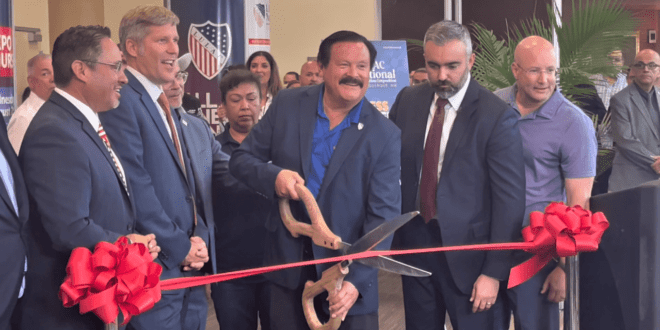Domingo Garcia leads ribbon-cutting ceremony at LULAC national convention in Albuquerque, New Mexico
The League of United Latin American Citizens (LULAC) is currently holding its national convention in Albuquerque, New Mexico, with Domingo Garcia, the national president of LULAC, presiding over a ribbon-cutting ceremony to kick off the event. The convention is expected to draw 10,000 participants and bring a $13 million economic boost to the city.
Progress and Challenges for Latinos in the US
Hector Flores, an 81-year-old Texas activist, reflects on the changes he has witnessed in his lifetime, as young Latinos faced the prospect of limited educational opportunities and low-wage work. While progress has been made, challenges still remain for Latinos in the United States.
Currently, Hispanic Americans are the largest minority group in the country with a population of 62.1 million people. They contribute an impressive $2.8 trillion to the U.S. economy annually. There are also 5 million Latino-owned businesses in the nation, providing jobs for 3 million workers. If these businesses were a country, their combined gross domestic product (GDP) would surpass that of France and the United Kingdom.
However, disparities persist. Latinos experience higher unemployment rates and earn 25% less than non-Hispanic whites. Their net economic assets are also significantly lower, only accounting for one-fifth of those of non-Hispanic whites. According to a 2022 report by the Senate’s Joint Economic Committee, only one in four Latino-owned businesses receive bank loans over $100,000.
LULAC’s Efforts to Address Disparities
The LULAC national convention in Albuquerque aims to address these disparities. With a focus on education, economic opportunities, and political representation for Latinos, LULAC is committed to improving conditions for the community.
The convention features a job fair where private companies and the military branches are present. LULAC National President Domingo Garcia emphasizes the organization’s dedication to ensuring economic opportunities for Latinos, including access to government contracts. He also highlights challenges in areas such as education, voting rights, and immigration.
The Fight for Immigration Reform and Advocacy
LULAC is particularly concerned about anti-immigrant rhetoric and policies in states like Texas and Florida. The organization plans to sue Texas over the placement of buoys in the Rio Grande, which are intended to deter migrants from crossing the border.
Garcia stresses the importance of humane treatment for migrants and advocates for immigration reform that would provide legal status to the millions of undocumented migrants residing in the United States. He believes the current political divide in Congress has stalled progress on immigration initiatives, but anticipates change in 2024.
The Growing Influence of Latinos
With Hispanics accounting for half of the country’s population growth from 2010 to 2020, their increased representation in Congress and their impact on federal economic and immigration policies are expected to grow as well. Currently, almost 10% of the U.S. Congress consists of Hispanic representatives or senators, marking a record number.
Garcia points out that Latino neighborhoods and communities are crucial in determining the outcome of future presidential elections. Swing states like Colorado, Arizona, and Nevada, as well as unexpected regions like Wisconsin and Pennsylvania, will see Latino voters making an impact. Garcia believes that even states like Texas and Florida are still up for grabs.
The Economic Contribution of Immigrants
Garcia and Flores both emphasize the positive economic impact that immigrants, including those seeking asylum, can have on the United States. They argue that many successful American companies were founded by immigrants with innovative ideas, and excluding migrants from opportunities could hinder overall success as a nation.
Both activists acknowledge the need for comprehensive immigration reform that recognizes the contributions and potential of immigrants in the long run.
For the latest news and stories on issues along the U.S.-Mexico border, visit BorderReport.com.
 Mind Uncharted Explore. Discover. Learn.
Mind Uncharted Explore. Discover. Learn.
